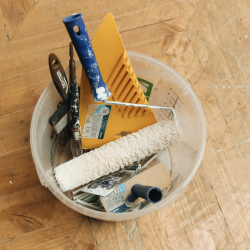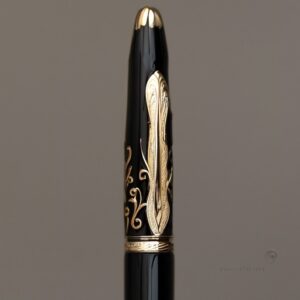Vintage fountain pens hold a special allure for many pen enthusiasts. Their timeless elegance, exquisite craftsmanship, and the stories they carry make them cherished collectibles. However, proper maintenance is crucial to preserve their beauty and functionality. One of the key aspects of maintaining vintage fountain pens is cleaning them effectively. In this comprehensive guide, we’ll explore seven essential tips to help you master the art of cleaning vintage fountain pens, ensuring they remain in pristine condition for years to come.
Understand the Anatomy of Your Fountain Pen
Before diving into cleaning, it’s important to understand the intricate components of your vintage fountain pen. Familiarize yourself with the nib, feed, barrel, converter or cartridge, and cap. Knowing how these parts fit together will facilitate a thorough cleaning process and prevent accidental damage.
Gather the Right Tools
Cleaning vintage fountain pens requires a delicate touch and specialized tools. Invest in a bulb syringe or a pen flush solution, microfiber cloths, soft bristle brushes (such as toothbrushes or specialized pen cleaning brushes), and distilled water. Avoid using harsh chemicals or abrasive materials that could harm the pen’s delicate surfaces.
Disassemble with Caution
While disassembling your fountain pen for cleaning may be necessary, proceed with caution. Vintage pens, especially those made from delicate materials like celluloid or ebonite, can be fragile. Follow manufacturer guidelines if available, and handle each part gently to avoid bending or breaking. Take note of the order in which you disassemble the pen for easy reassembly later.
Soak and Flush
Start the cleaning process by soaking the disassembled parts of your fountain pen in a solution of mild dish soap and distilled water. Allow the parts to soak for several hours or overnight to loosen ink residue and debris. After soaking, use a bulb syringe to flush each part with clean distilled water until the water runs clear. Be patient and thorough, ensuring all traces of ink are removed.
Pay Attention to the Nib
The nib is the heart of your fountain pen, and it requires special care during cleaning. Use a soft bristle brush or a specialized nib cleaning tool to gently remove any dried ink or debris. Take care not to bend or misalign the tines, as this can affect the pen’s performance. If stubborn ink stains persist, consider soaking the nib in a pen flush solution for a few minutes before gently brushing again.
Dry Carefully
After cleaning, it’s crucial to dry each component of your fountain pen thoroughly to prevent rust, corrosion, or damage. Use a microfiber cloth to gently pat dry the parts, taking care not to leave any lint behind. Allow the parts to air dry completely before reassembling the pen. Avoid using heat sources such as hairdryers, as excessive heat can warp or damage certain materials.
Reassemble with Care
Once all the parts are clean and dry, reassemble your vintage fountain pen carefully. Refer to any notes or photographs you took during disassembly to ensure everything is put back together correctly. Take your time and handle each part gently to avoid accidental damage. Once reassembled, give the pen a final wipe with a microfiber cloth to remove any fingerprints or smudges.
Conclusion
Cleaning vintage fountain pens is both an art and a science, requiring patience, attention to detail, and the right tools. By understanding the anatomy of your pen, gathering the proper cleaning supplies, and following a careful step-by-step process, you can ensure your cherished fountain pens remain in pristine condition for generations to come. Remember to handle each part with care, from disassembly to reassembly, and enjoy the satisfaction of preserving these timeless writing instruments. With these seven essential tips, you’ll be well-equipped to master the art of cleaning vintage fountain pens and keep your collection shining brightly for years to come.


